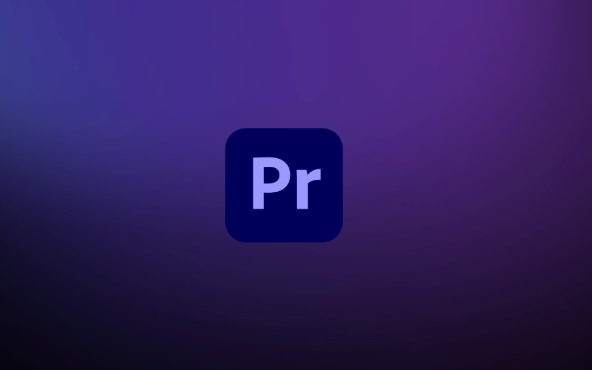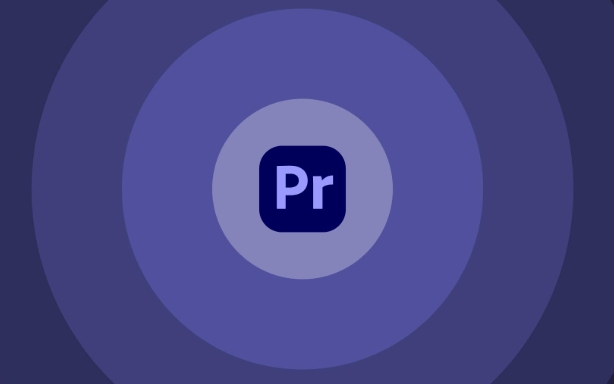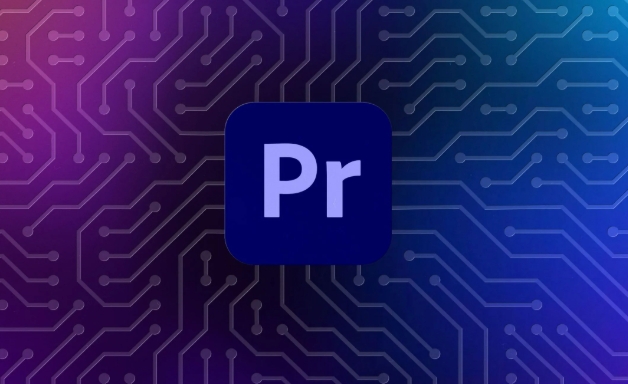Premiere Pro crash problems can be solved by checking system configuration, updating software and plug-ins, cleaning caches, and optimizing project settings. First, you need to confirm whether the computer meets the configuration requirements officially recommended by Adobe, including GPU performance, RAM capacity and driver updates; second, make sure that Premiere and Creative Cloud are the latest versions, and check for updates manually regularly; at the same time, you should clear the media cache and reset the preferences to eliminate temporary file interference; in addition, avoid stacking too many layers and special effects on the timeline, and use proxy clips or rendering preview files to improve stability.

Premiere Pro crashes a lot? Yeah, that's super frustrating. It's not always your fault either—sometimes it's the software, sometimes it's how things are set up. But there are things you can try to make it more stable.

Check Your System Requirements First
Before diving into complicated fixes, make sure your machine actually meets what Premiere needs. If your GPU is too old or RAM is low, even basic editing can cause crashes.

- Check Adobe's official site for recommended specs for your version
- Make sure your graphics drivers are updated (NVIDIA/AMD/Intel all have their own tools)
- Avoid using unsupported codecs—some formats like H.264 from phones can be unstable
If you're on an older laptop or a system with integrated graphics only, don't expect smooth sailing. You might need to proxy edit instead of working with full-res files.
Keep Premiere and Plugins Updated
Crashes often happen because of bugs that Adobe already fixed in newer versions. Even if you're not seeing update prompts, check manually once in a while.

- Go to Help > Updates inside Premiere
- Also, make sure Creative Cloud is set to auto-check updates
- Outdated plugins can also crash the app—disable them one by one to test
A good rule of thumb: if you're running an older version of Premiere (like 2020 or earlier), consider updating to at least 2022 or later. Stability improved a lot around then.
Clear Cache and Reset Preferences
Sometimes corrupted cache or bad preference settings are the real culprit. Doing a reset doesn't delete your projects, just clears out temp files and interface settings.
To reset preferences:
- Hold Alt (Windows) or Option (Mac) when launching Premiere
- Confirm you want to reset preferences
Also, clear these regularly:
- Media Cache (Preferences > Media Cache)
- Auto-Save projects folder (you can change this location too if your drive is full)
If you're working off an external drive, move the project to your internal SSD first—Premiere doesn't like slow drives.
Watch Out for Overloaded Sequences
Too many layers, effects, or transitions can overload Premiere's playback engine, especially if your hardware isn't top-tier.
Try these:
- Use proxies for high-res footage
- Render preview files (Ctrl/Cmd Enter)
- Break big sequences into smaller ones
And don't ignore the warning triangle in the timeline—if Premiere tells you playback will be dropped frames, take it seriously. That's often a crash waiting to happen.
Most of these fixes don't take long and can save you hours of headaches. It's not magic—it's just about matching the software to your setup and keeping everything clean behind the scenes.
The above is the detailed content of Premiere Pro keeps crashing. For more information, please follow other related articles on the PHP Chinese website!

Hot AI Tools

Undress AI Tool
Undress images for free

Undresser.AI Undress
AI-powered app for creating realistic nude photos

AI Clothes Remover
Online AI tool for removing clothes from photos.

Clothoff.io
AI clothes remover

Video Face Swap
Swap faces in any video effortlessly with our completely free AI face swap tool!

Hot Article

Hot Tools

Notepad++7.3.1
Easy-to-use and free code editor

SublimeText3 Chinese version
Chinese version, very easy to use

Zend Studio 13.0.1
Powerful PHP integrated development environment

Dreamweaver CS6
Visual web development tools

SublimeText3 Mac version
God-level code editing software (SublimeText3)

Hot Topics
 how to use the razor tool in Premiere Pro
Jul 02, 2025 pm 03:58 PM
how to use the razor tool in Premiere Pro
Jul 02, 2025 pm 03:58 PM
The method to quickly use the razor tool in PremierePro is to press the C key; 1. Press the C key on the keyboard to switch to the razor tool, or you can find the knife icon in the left toolbar to select it; 2. Position the playback head to the position you need to cut, click the clip to cut; 3. If you need to delete the middle part, you can select the middle section and press Delete to delete it after the same clip is cut again; 4. Use the selection tool (V) to adjust the sequence of the clips or leave a blank timeline; 5. If you need to cut the multi-track clip at the same time, you can check "All tracks" in the top menu; 6. If you accidentally cut the wrong clips, you can undo or right-click the clips; 7. In addition, press and hold the Alt left mouse button to temporarily enable the razor function without switching the tool; pay attention to ensuring that the playback head is used when using it; 6. If you accidentally cut it wrong, you can undo or right-click the clips; 7. In addition, press and hold the left mouse button of the Alt mouse to temporarily enable the razor function without switching the tool;
 how to fix audio drift in Premiere Pro
Jul 02, 2025 pm 04:01 PM
how to fix audio drift in Premiere Pro
Jul 02, 2025 pm 04:01 PM
To solve the problem of audio and video out of synchronization in PremierePro, first check the timeline settings to ensure that the frame rate matches the audio sample rate; secondly enable hardware acceleration and optimize cache settings to improve performance; then use the synchronization lock function to prevent mismoving the track; finally pay attention to exporting settings, select a stable format and confirm that the audio parameters are correct. Perform the above steps in turn to effectively avoid audio and video drift problems.
 how to fade audio in Premiere Pro
Jul 05, 2025 am 12:50 AM
how to fade audio in Premiere Pro
Jul 05, 2025 am 12:50 AM
Adding a fade effect to audio in PremierePro can be achieved in three ways: 1. Use audio transition effects such as "Constant Gain" or "Exponential Fade" and drag directly to the beginning of the audio clip; 2. Manually add volume keyframes in the "Effect Controls" panel, and control fade speed and nature by adjusting the keyframe position and curve; 3. Use the "Trail Mixer" to drag the volume slider in real time to record the operation track, which is suitable for unified management of multi-track audio. Each method has its own advantages. Newbie can choose to quickly achieve the transition effect, advanced users are suitable for manual adjustment or use the track mixer to obtain more refined control. Finally, it is recommended that preview ensures that the audio transition is natural and smooth.
 how to apply an effect to multiple clips in Premiere Pro
Jul 05, 2025 am 12:22 AM
how to apply an effect to multiple clips in Premiere Pro
Jul 05, 2025 am 12:22 AM
There are three ways to quickly add the same effect to multiple clips in PremierePro: 1. Use the "EffectChainer" tool to first apply the effect to one clip, and then click other clips one by one through the chain icon in the effect panel to apply it in batches; 2. By copying and pasting attributes, right-click the first clip with added effects in the timeline to select copy, then select other clips to right-click to select paste attributes, and only select video or audio effects to paste; 3. Use the adjustment layer to process the video effect, create a new adjustment layer and place it above the target clip, and drag the effect to the adjustment layer to affect all clips below it. The above methods can significantly improve work efficiency and are suitable for the needs of different scenarios.
 how to normalize audio in Premiere Pro
Jul 04, 2025 am 12:16 AM
how to normalize audio in Premiere Pro
Jul 04, 2025 am 12:16 AM
NormalizingaudioinPremiereProadjuststheloudestpeakinacliptoatargetlevel,balancingvolumeacrossclips.1.Right-clickaclipandchoose“AudioGain…”2.Select“NormalizeMaxPeakto”andsetatargetlike-1dBor-3dB.3.ClickOKtoapply;thisscaleseachclip’svolumeuniformly.Itw
 is Adobe Premiere Pro free
Jul 03, 2025 am 12:26 AM
is Adobe Premiere Pro free
Jul 03, 2025 am 12:26 AM
AdobePremierePro is not a free software. You need to subscribe to AdobeCreativeCloud. The main methods include monthly or annual subscriptions, and students and teachers can enjoy discounts; in addition, you can also choose free alternative software such as DaVinciResolve, Shotcut, OpenShot and Lightworks; you need to pay attention to the 7-day trial period, the possible deduction of credit card binding, and the cancellation in the middle will not retain the remaining time.
 how to rotate video in Premiere Pro
Jul 04, 2025 am 01:33 AM
how to rotate video in Premiere Pro
Jul 04, 2025 am 01:33 AM
There are three ways to rotate videos in PremierePro. 1. Use the "Motion" option in the "Effect Control" to accurately adjust the rotation angle, which is suitable for fine operation; 2. Use the "Create Sequence from Clip" function to automatically correct the vertical video direction of the mobile phone, saving time and effort; 3. Use "Crop" and "Zoom" to adjust the screen to fill the screen and avoid black edges to ensure complete output quality.
 how to make text appear one letter at a time in Premiere Pro
Jul 08, 2025 am 12:02 AM
how to make text appear one letter at a time in Premiere Pro
Jul 08, 2025 am 12:02 AM
To display text letter by letter, use PremierePro’s built-in “Typewriter” animation preset or manually adjust the opacity or zoom of each character. 1. Use presets such as "Typewriter-Reveal" in the "EssentialGraphics" panel to directly apply the verbatim effect; 2. Enable character-by-character animation through the "EssentialGraphics panel" and select Opacity or Scale for customization; 3. Set Start and EndOffset to control the animation rhythm and combine keyframes to achieve dynamic changes; 4. You can adjust the offset, add blur or color change to enhance the effect. It is recommended that each letter lasts 0.1-0.2 seconds and is suitable for phrases rather than long paragraphs.






